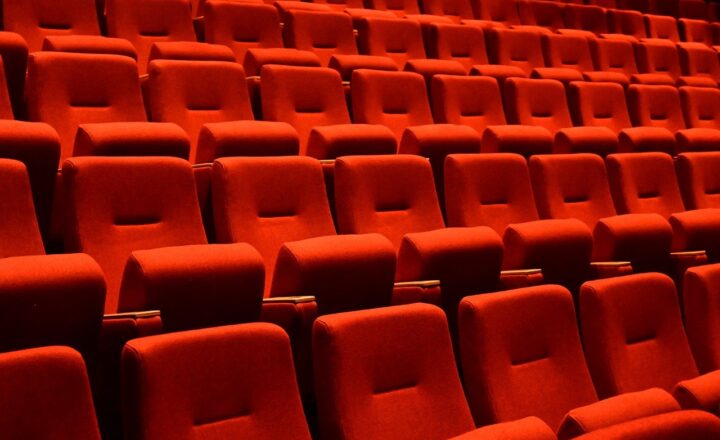The Evolution of Movies: How Cinema Transformed Over the Last Century
November 18, 2024

Cinema, often referred to as the seventh art, has experienced a remarkable transformation over the past century. From the silent films of the early 20th century to the sophisticated digital creations of today, the journey of movies mirrors the evolution of technology and society itself. In this article, we will explore the milestones in cinematic history, the impact of technological advancements on filmmaking, and the cultural shifts that have influenced the narrative of cinema.
1. The Silent Era: The Birth of Cinema (1890s-1920s)
The concept of moving images has been around since the invention of devices like the zoetrope and the phenakistoscope, but it wasn’t until the late 19th century that cinema began taking a recognizable form.
Silent films, characterized by their lack of synchronized sound, relied heavily on visual storytelling, intertitles, and musical accompaniment to convey emotion and narrative. Filmmakers like D.W. Griffith revolutionized the craft with innovative techniques such as cross-cutting and close-ups. Films like “The Birth of a Nation” and “Intolerance” pushed boundaries, sparking discussions around cinematic artistry and storytelling.
During this era, a cultural phenomenon known as the “shadow play” took off. Movies became a communal experience, as people flocked to theaters to escape reality. Iconic figures like Charlie Chaplin and Buster Keaton emerged, using their comic talents to captivate audiences across the globe. With around 10,000 theaters operating in the U.S. by the 1920s, the silent era solidified cinema as a staple of entertainment.
2. The Talkies: The Advent of Sound (1927)
The game-changer in cinema was the transition from silent films to “talkies.” In 1927, Warner Bros. released “The Jazz Singer,” the first feature-length film to incorporate synchronized dialogue. This technological advancement sent shockwaves through the industry, leading filmmakers to rethink storytelling, sound design, and performance.
The emergence of sound brought about a new genre of musicals, which quickly captivated audiences. Hollywood responded by investing in innovative sound technology and hiring talented composers and lyricists. As films with sound became the norm, the silent film industry faced a steep decline, resulting in the disappearance of many seasoned actors who struggled to transition to whispers and dialogue.
By the late 1930s, sound had become integral to films, allowing for richer character development and more immersive storytelling. Urban centers bustling with theaters welcomed the audience basking in the cinematic experience of sound.
3. The Golden Age of Hollywood (1930s-1960s)
The Golden Age of Hollywood began in the 1930s and lasted until the 1960s, characterized by the studio system’s strict control over film production. Major studios like MGM, Warner Bros., and 20th Century Fox cultivated star power, producing classic films that have become cultural touchstones.
This period introduced genres as we know them today: film noir, westerns, romantic comedies, and epics. Iconic films such as “Gone with the Wind,” “Casablanca,” and “The Wizard of Oz” showcased not just artistry but also the functionality of large studios. The introduction of Technicolor brought vibrant palettes to the screen, further enhancing the artistic depth of films.
As television started to emerge as a popular medium, many believed cinema’s influence would wane. However, Hollywood adapted, producing bigger spectacles in an effort to lure audiences back from their living rooms. This led to the creation of grand historical epics and social issue films that mirrored society’s drastic changes during and after World War II.
4. The Rise of Independent Cinema (1960s-1980s)
As the 1960s ushered in a wave of counterculture and social reform, independent cinema began to flourish, breaking away from Hollywood’s formula. The rise of influential filmmakers such as Martin Scorsese, Francis Ford Coppola, and Steven Spielberg heralded a new era of innovative storytelling that took risks and challenged societal norms.
Films like “Easy Rider,” “The Godfather,” and “Psycho” revolutionized how stories could be told, often embracing edgy themes and unconventional narratives. This discontent with the studio system led to the establishment of film schools and independent production houses, further diversifying the cinematic landscape.
Throughout this time, technical advancements continued to evolve, particularly in film editing and visual effects. The introduction of portable cameras and smaller film crews enabled filmmakers to capture raw, intimate stories that resonated with audiences.
5. The Digital Revolution (1990s-2000s)
The late 20th century saw the advent of digital technology, changing not only the way films were made but also how they were distributed and viewed. The introduction of CGI (Computer-Generated Imagery) expanded the creative possibilities for filmmakers, allowing them to create stunning visuals previously deemed impossible.
Movies such as “Jurassic Park” and “The Matrix” showcased groundbreaking visual effects that captivated audiences and propelled studios into the digital age. Digital cameras became more affordable, giving independent filmmakers a chance to produce quality films without the substantial costs associated with traditional film production.
The rise of the internet and streaming services also led to fundamental shifts in movie distribution. Platforms like Netflix, Hulu, and Amazon Prime began to change the landscape, democratizing access to films and providing opportunities for filmmakers worldwide to reach a diverse audience.
6. The Era of Streaming and Globalization (2010s-Present)
As we move into the 21st century, the film industry has undergone a massive transformation. Streaming has become the primary mode of viewing for many, leading to the closure of numerous theaters and the reevaluation of how studios distribute films. This shift has made films more accessible but has also sparked discussions around the value of the theatrical experience.
Globalization has further impacted cinema, as filmmakers from diverse backgrounds create narratives relevant to their cultures. We have witnessed an increase in international co-productions and a broader representation of stories on screen, showcasing various cultures and perspectives. Films like “Parasite” have gained acclaim and recognition, proving that global audiences appreciate storytelling that transcends borders.
Moreover, technological advancements continue to reshape cinema, with virtual reality (VR) and augmented reality (AR) emerging as exciting new frontiers. Filmmakers are experimenting with interactive storytelling and immersive experiences that engage audiences in unprecedented ways.
7. Conclusion: The Future of Cinema
As cinema moves forward, it remains a powerful medium that reflects, shapes, and influences society. The evolution of movies over the last century tells a rich story of innovation, adaptation, and resilience. With an ever-changing landscape enriched by technology and diverse voices, the future of cinema is bright. Whether through the hyperrealism of digital effects, the emotional depth of storytelling, or the communal experience of going to the theater, movies will continue to capture the human experience in all its complexities.
As we look back at the evolution of cinema, we see not only how far we have come but also how cinema has opened doors to new narratives and endless possibilities. As technology advances, we can only imagine what the next hundred years will bring for this ever-evolving art form.






